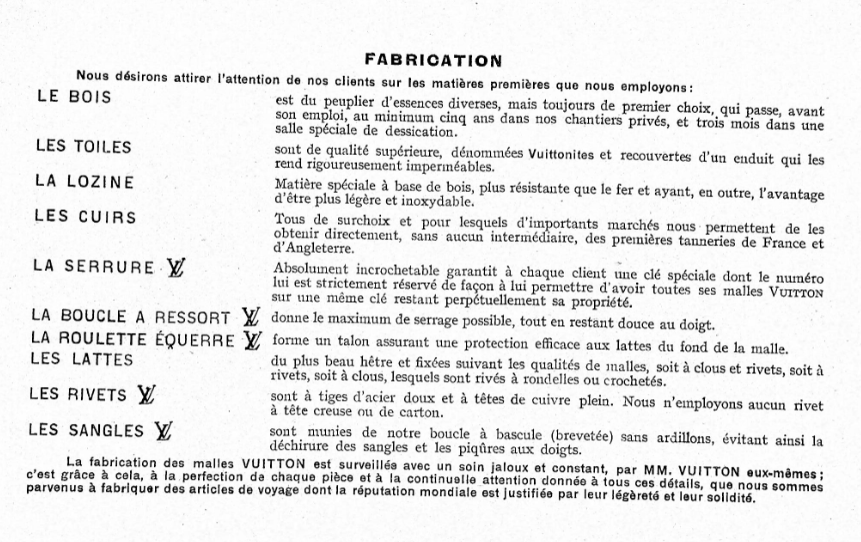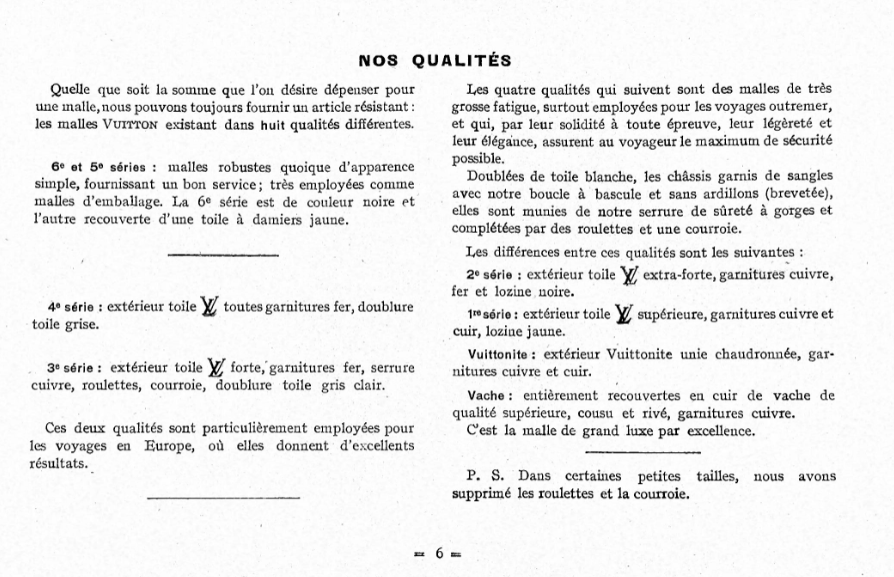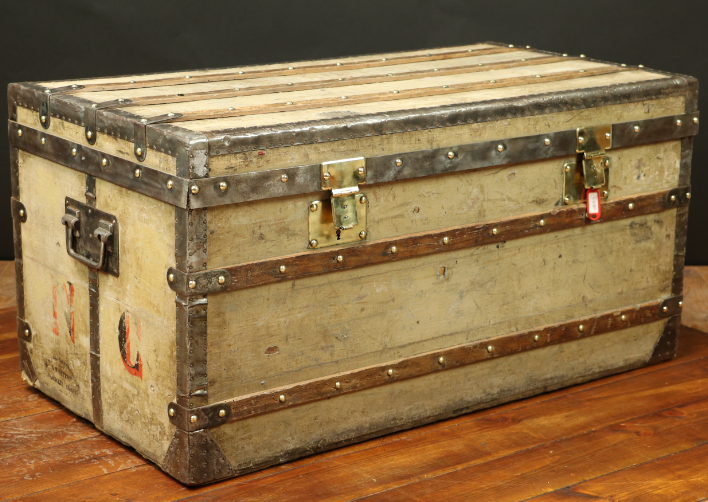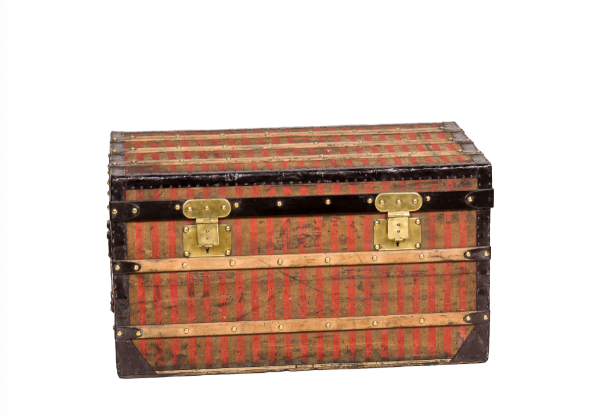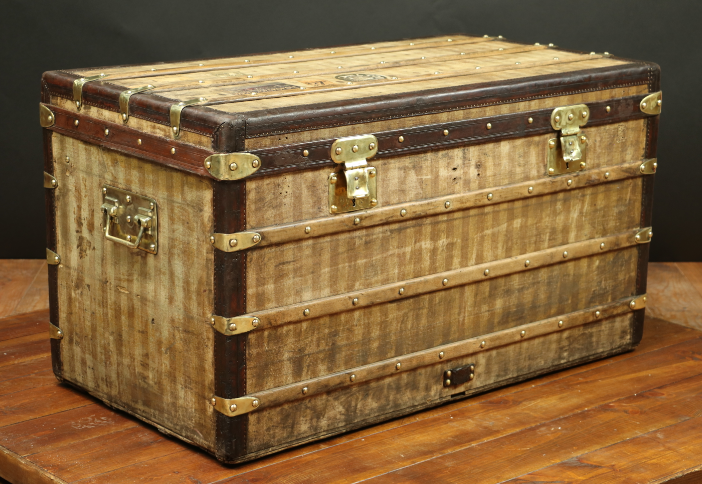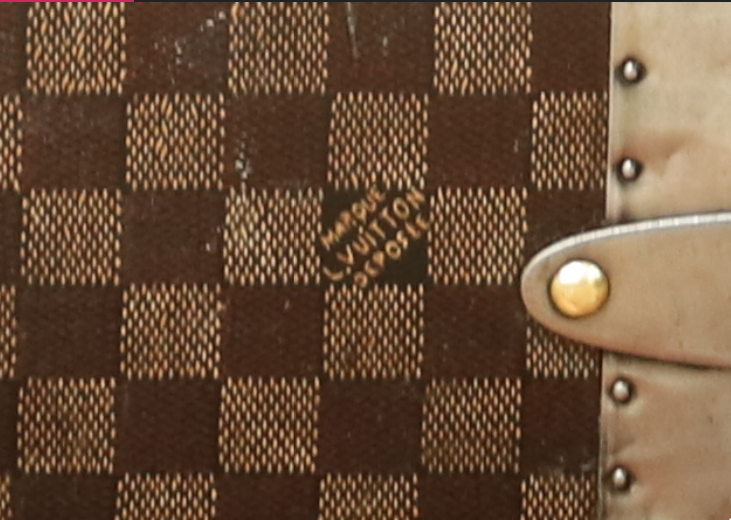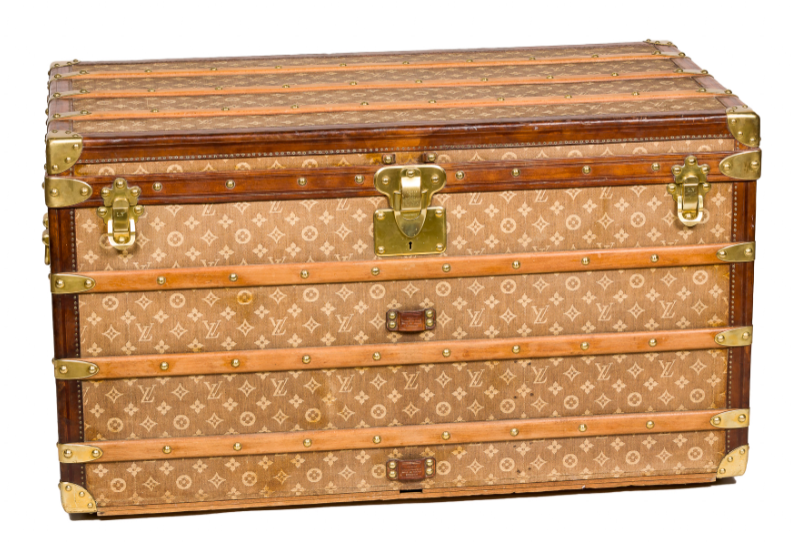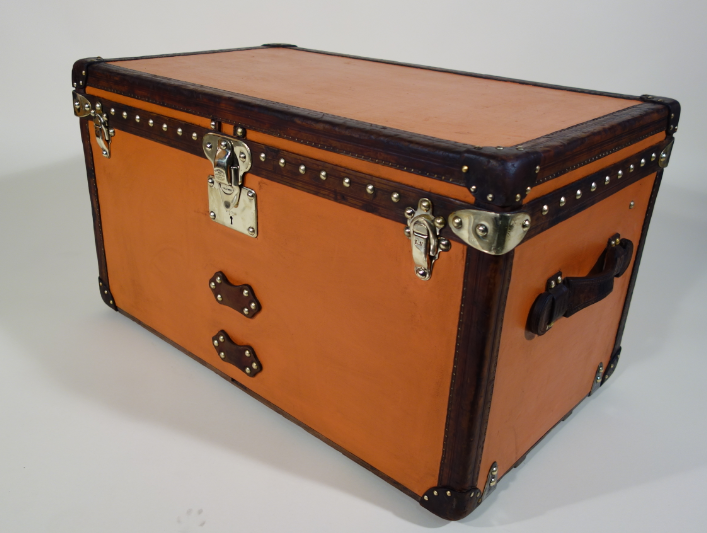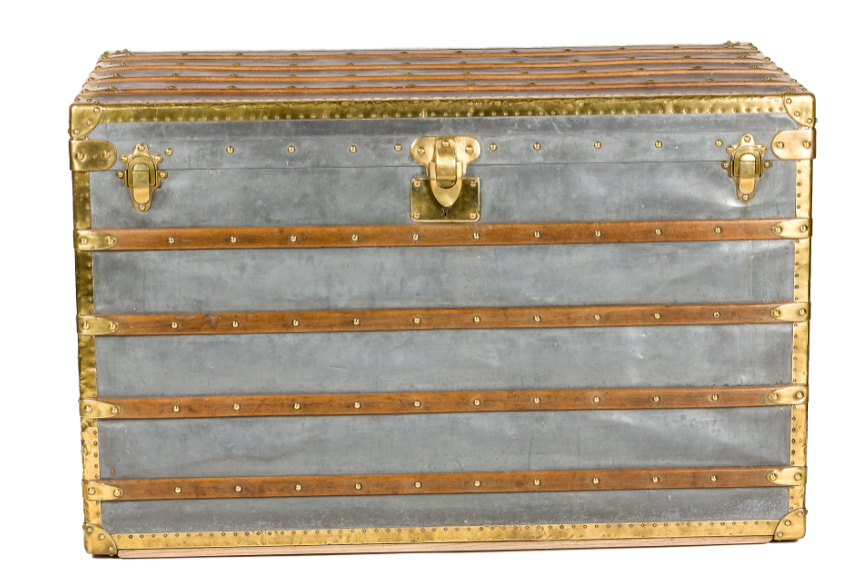The Steamer Trunk due to its popularity, has different finishes. Borders in steel, leather or lozine, handles in steel, leather or brass, jewelery in steel or brass (or even in copper for some leather trunks), the steamer trunk adapts to every budget.
In addition to these finishes, the steamer-trunk saw its canvas evolve; first in 1860, the avant-garde gray trianon at a time when everyone made brown coated canvas.
Then in 1872 red striped trunks (beige and red) and tan stripes (beige and brown) symbols of the Deauville era and its half-timbered house.
Red Stripped model
Tan Stripes Model
In 1888 came the checkered canvases, mainly yellow for packing crates and a predominantly red checkerboard. Following the first cases of counterfeit, the House Vuitton begins to deposit on some checkers the mention "Louis Vuitton, registered model. "
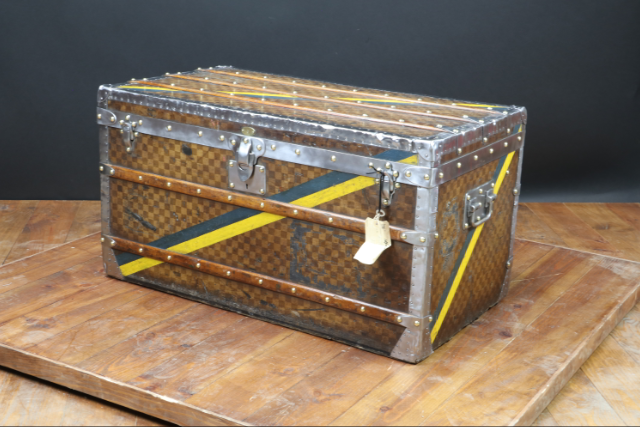
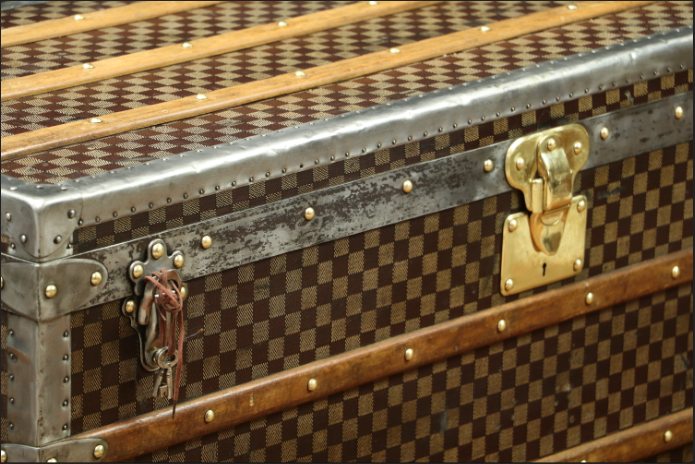
"Louis Vuitton, registered model"
Finally, the paintings begin to look like what we all know with the arrival of the monogrammed canvas "LV" woven in 1896. The model will also exist outside "cow" (leather), vuittonite orange or yellow, trunks in zinc for long transport in tropical countries ...
Woven monogram model
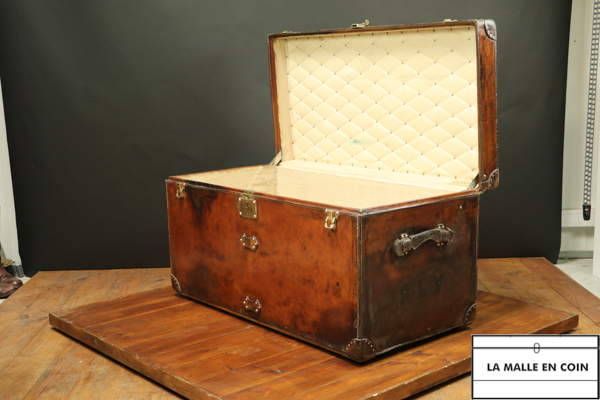 "Cow" (leather) model
"Cow" (leather) model
Orange Vuittonite model
Zinc model
And finally in monogrammed canvas stencilled and printed, as we know it.
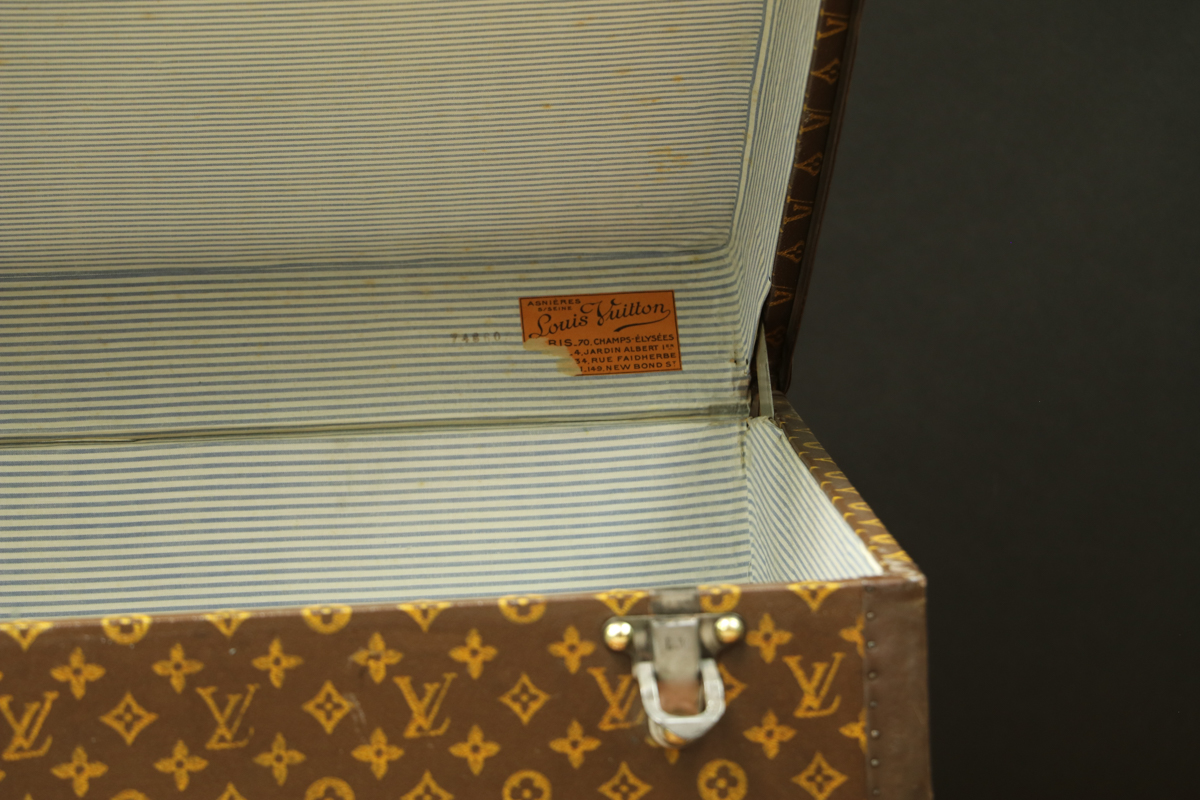
Stencil Monogram model
We are fortunate enough to have at the luggage museum several steamer trunks that belonged to historical personalities, such as the steamer trunk that belonged to the Grand Duke of Russia Cyril Vladimirovich, with leather and copper nail cloak. Marked by a crown that attests to his rank of nobility, his initials and a sea anchor. Or the steamer trunk of Philippe de Vilmorin, famous French botanist.


